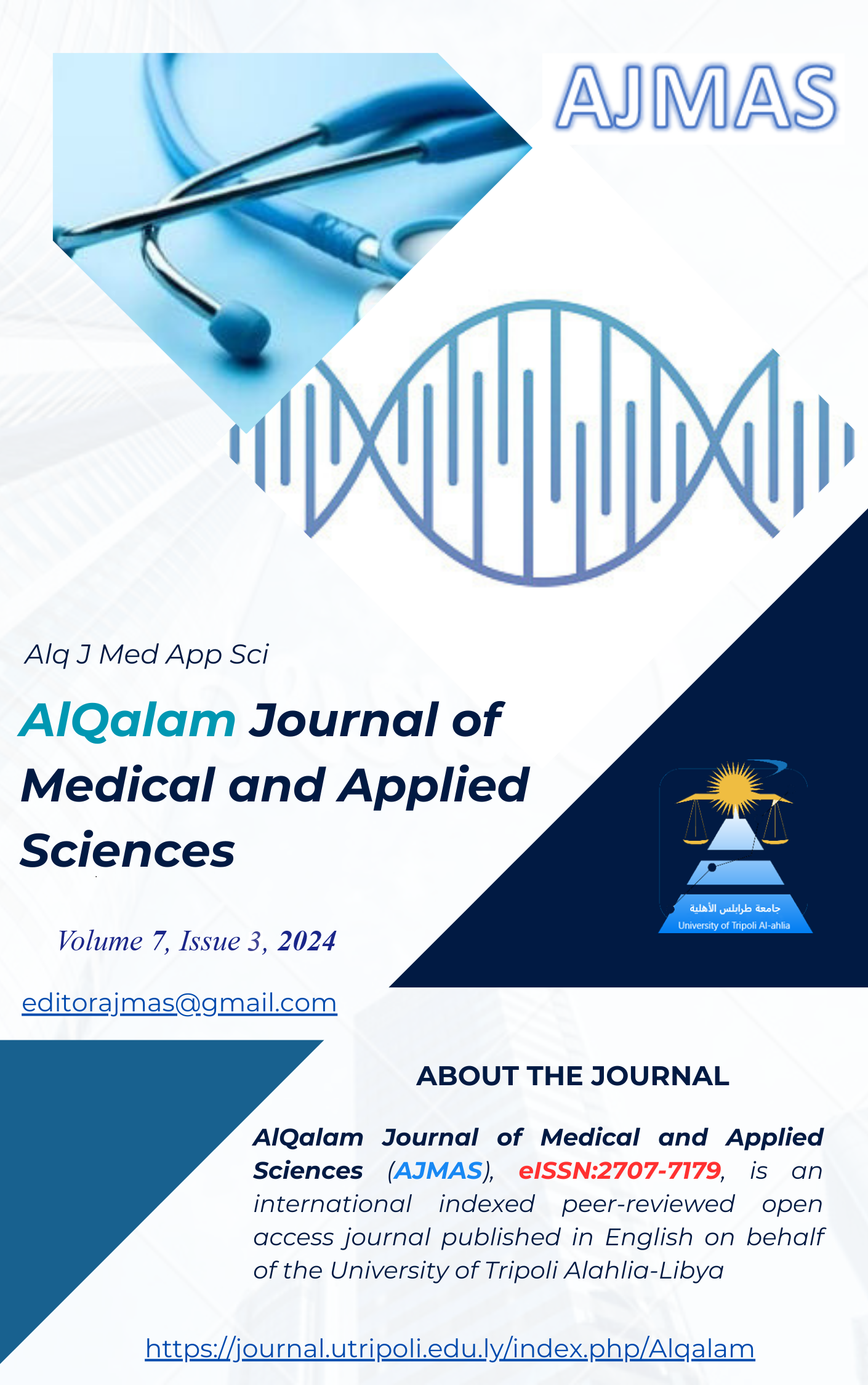Assessment of Lead and Iron Concentration in Cosmetics Traded in the AL-Ajilat City Market
DOI:
https://doi.org/10.54361/ajmas.247353Keywords:
Heavy Metals, World Health Organization, Food and Drug Administration. Element Lead, Element IronAbstract
This study examined the concentrations of heavy metals, namely lead (Pb) and iron (Fe), in lipsticks, foundations, and face powders to ensure compliance with international safety standards and assess potential health risks. Using atomic absorption spectroscopy (AAS), samples were analyzed for heavy metal content and compared to WHO, FDA, and Health Canada guidelines. Results included that lead levels in lipsticks ranged from 0.03 to 6.15 ppm, with one sample exceeding the WHO limit of 0.01 ppm, raising safety concerns. Iron levels were alarmingly high, with a maximum of 2,566 ppm, well above the WHO guideline of 0.3 ppm. Baseline samples consistently showed low levels of lead at 0.03 ppm, but iron concentrations reached 5,735 ppm, indicating significant safety deviations. Lead concentrations in the face powders ranged from 0.03 to 2.14 ppm, with some exceeding the WHO limit, while iron levels averaged 2,613 ppm, well above acceptable limits. The study concluded that high iron levels in these cosmetic products pose health risks, stressing the need for stricter regulatory oversight and quality control in the cosmetics industry.
فحصت هذه الدراسة تركيزات المعادن الثقيلة، وهي الرصاص والحديد، في أحمر الشفاه وكريمات الأساس وبودرة الوجه لضمان الامتثال لمعايير السلامة الدولية وتقييم المخاطر الصحية المحتملة. وباستخدام مطيافية الامتصاص الذري، تم تحليل العينات لمعرفة محتواها من المعادن الثقيلة ومقارنتها بإرشادات منظمة الصحة العالمية وإدارة الغذاء والدواء ووزارة الصحة الكندية. وتضمنت النتائج أن مستويات الرصاص في أحمر الشفاه تتراوح من 0.03 إلى 6.15 جزء في المليون، مع تجاوز إحدى العينات للحد الأقصى لمنظمة الصحة العالمية البالغ 0.01 جزء في المليون، مما أثار مخاوف تتعلق بالسلامة. وكانت مستويات الحديد مرتفعة بشكل مثير للقلق، حيث بلغ الحد الأقصى 2566 جزء في المليون، وهو أعلى بكثير من إرشادات منظمة الصحة العالمية البالغة 0.3 جزء في المليون. وأظهرت العينات الأساسية باستمرار مستويات منخفضة من الرصاص عند 0.03 جزء في المليون، لكن تركيزات الحديد وصلت إلى 5735 جزء في المليون، مما يشير إلى انحرافات كبيرة تتعلق بالسلامة. وتراوحت تركيزات الرصاص في بودرة الوجه من 0.03 إلى 2.14 جزء في المليون، مع تجاوز بعضها للحد الذي حددته منظمة الصحة العالمية، في حين بلغ متوسط مستويات الحديد 2613 جزء في المليون، وهو ما يفوق الحدود المقبولة بكثير. وخلصت الدراسة إلى أن ارتفاع مستويات الحديد في هذه المنتجات التجميلية يشكل مخاطر صحية، مؤكدة على الحاجة إلى رقابة تنظيمية أكثر صرامة ومراقبة الجودة في صناعة مستحضرات التجميل. وتشمل التوصيات تحسين ممارسات المراقبة، وتعديل التركيبات لتقليل محتوى الحديد، ومواصلة التحقيق في مصادر التلوث
Downloads
Published
How to Cite
Issue
Section
License
Copyright (c) 2024 Khaled Hreeba, Abdulati Khalil, Nader Elaziby, Abduraouf Mohamed, Abdul Rahman Al-Tiani, Ibtesam Amer

This work is licensed under a Creative Commons Attribution 4.0 International License.















